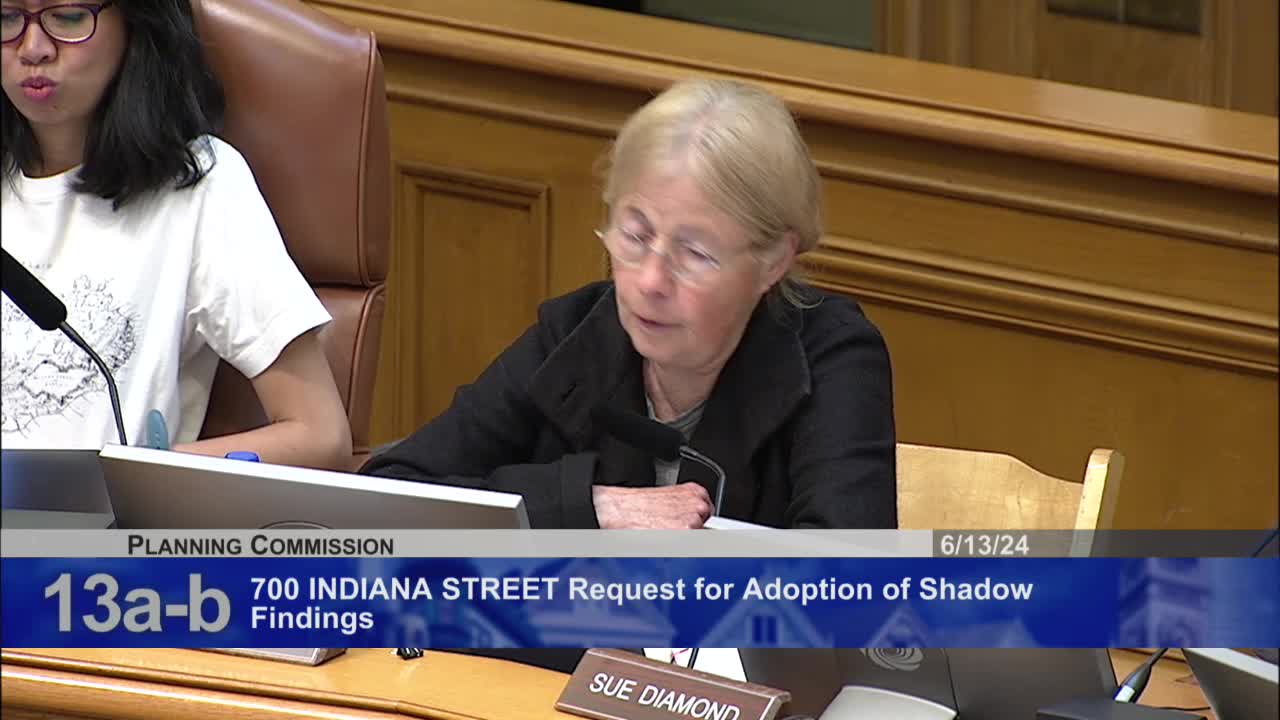Community Divided Over New Biolab Development Plans
June 13, 2024 | San Francisco City, San Francisco County, California

This article was created by AI summarizing key points discussed. AI makes mistakes, so for full details and context, please refer to the video of the full meeting. Please report any errors so we can fix them. Report an error »

In a recent government meeting, discussions centered around the implications of large laboratory buildings in San Francisco's eastern neighborhoods, particularly in relation to the Eastern Neighborhoods Plan established in 2008. The plan, which was designed to create a balance between residential development and commercial uses, has come under scrutiny as proposals for new lab buildings emerge.
Commissioners expressed concerns that the introduction of large lab facilities could disrupt the urban mixed-use zoning intended to buffer residential areas from heavy commercial activities. The original zoning aimed to foster a vibrant community with active residential spaces, contrasting with the more isolated nature of lab buildings, which typically see reduced activity after business hours.
The conversation highlighted the historical context of the Eastern Neighborhoods Plan, which was developed during a time when the University of California, San Francisco (UCSF) was expanding in Mission Bay. The plan sought to accommodate various uses while protecting residential neighborhoods from the encroachment of large commercial developments. However, recent changes in zoning laws, particularly a unanimous vote by the Board of Supervisors in 2021, have shifted the landscape, limiting the types of commercial uses allowed in urban mixed-use zones.
Commissioners also grappled with the dual pressures of increasing housing demands and the push for biolabs, reflecting a broader tension in urban planning between residential needs and commercial interests. Suggestions were made for lab facilities to engage more actively with the community, such as contributing to local schools and enhancing public spaces, to foster a sense of partnership rather than isolation.
Ken Rich, a former city planner involved in the drafting of the Eastern Neighborhoods Plan, emphasized the importance of maintaining a diverse mix of uses in the area to avoid a \"monoculture\" of either residential or commercial developments. He noted that while the zoning has largely succeeded over the past decade, evolving conditions necessitate a reevaluation of how these spaces are utilized.
The meeting underscored the ongoing challenges faced by city planners and community members as they navigate the complexities of urban development, balancing the need for housing, commercial growth, and community engagement.
Commissioners expressed concerns that the introduction of large lab facilities could disrupt the urban mixed-use zoning intended to buffer residential areas from heavy commercial activities. The original zoning aimed to foster a vibrant community with active residential spaces, contrasting with the more isolated nature of lab buildings, which typically see reduced activity after business hours.
The conversation highlighted the historical context of the Eastern Neighborhoods Plan, which was developed during a time when the University of California, San Francisco (UCSF) was expanding in Mission Bay. The plan sought to accommodate various uses while protecting residential neighborhoods from the encroachment of large commercial developments. However, recent changes in zoning laws, particularly a unanimous vote by the Board of Supervisors in 2021, have shifted the landscape, limiting the types of commercial uses allowed in urban mixed-use zones.
Commissioners also grappled with the dual pressures of increasing housing demands and the push for biolabs, reflecting a broader tension in urban planning between residential needs and commercial interests. Suggestions were made for lab facilities to engage more actively with the community, such as contributing to local schools and enhancing public spaces, to foster a sense of partnership rather than isolation.
Ken Rich, a former city planner involved in the drafting of the Eastern Neighborhoods Plan, emphasized the importance of maintaining a diverse mix of uses in the area to avoid a \"monoculture\" of either residential or commercial developments. He noted that while the zoning has largely succeeded over the past decade, evolving conditions necessitate a reevaluation of how these spaces are utilized.
The meeting underscored the ongoing challenges faced by city planners and community members as they navigate the complexities of urban development, balancing the need for housing, commercial growth, and community engagement.
View full meeting
This article is based on a recent meeting—watch the full video and explore the complete transcript for deeper insights into the discussion.
View full meeting
